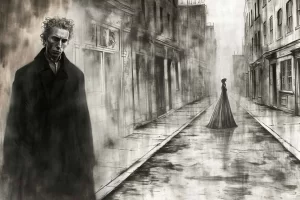The Hermann Grima House

Most haunted houses can be quite daunting, as most tend to perceive ghosts as rather unwelcoming, if not outright hostile. Though, there are some exceptions to the rule. The Hermann-Grima House’s ghosts are said to be the friendliest ghosts in New Orleans, complete with a dose of southern hospitality. The Hermann-Grima House was built in 1831 for the Hermann family, who were Jewish-German immigrants who moved to America to capitalize on the cotton industry. They were initially prosperous until the cotton market collapsed, when the family was forced to sell the home to recoup their losses. The Grima family bought the house in 1844. The Grimas were a large family and were known for being well educated and influential, but they sided with the Confederacy during the Civil War. They were forced to flee when Union soldiers occupied the city, and came back home after the war. The house was sold to the Christian Women’s Exchange in 1924 and served as a women’s shelter for 50 years. The house was restored and converted into a museum in 1971, and it remains so today. The ghosts of the Grima family still inhabit the house, and are said to do nice things for guests and staff. They’ve been known to warm up the house on a cold day or fill the room with the pleasant smell of lavender. The ghosts of the occupying Union soldiers are also present, though not as friendly.
Samuel Hermanns
Looking to make it in the cotton trade, Jewish immigrant Samuel Hermann came to Louisiana from Germany in 1804. He initially lived in Des Allemands, also known as the German Coast. He became a broker for plantation owners and merchants, becoming very successful. Samuel got married in 1806, and he and his wife Marie had four children. The Hermann family moved to New Orleans in 1813, and Samuel expanded his business to brokering real estate, mortgages, and stocks.
In 1831, he hired architects to design and construct a home for his family. He had bought a plot of land on Saint Louis street sometime earlier and decided it was time to build his mansion. The Federal-style mansion quickly became known throughout all of New Orleans, being one of the finest homes in the city.
Disaster struck in 1837 when the cotton market in England collapsed. The cotton industry collapsed worldwide. Samuel Hermann’s prosperity depended on cotton, and so his business suffered as well. After filing bankruptcy, Hermann was forced to sell the house to make up for his losses. Hermann sold the house in 1844, just over ten years after having it built.
The Grima Family & the Civil War
The house was purchased by Felix Grima, a prominent judge and scholar. Felix had a massive family; he and his wife Adelaide had nine children. They also had several extended relatives living in the house, many of which were elderly. The custom at the time, especially for Roman Catholics, was to take in older members of the family.
The Grimas were known to be well-educated and connoisseurs of fine arts. They had thousands of books in the home, and the museum today is still in possession of over 2,000 original books from the Grima family. They also mingled with the city’s high society and were leaders in the local religious communities.
The Grima family were slave owners and supported the Confederacy. When New Orleans was captured by Union soldiers in 1862, the family fled, as many Confederate supporters did. The family went to stay with relatives in Augusta, Georgia. Two of the children had gone off to fight for the Confederacy. Meanwhile, the house fell under Union control. The soldiers used the home as a barracks. They had target practice sessions, shooting their guns in the house and destroying much of the walls and furniture. Even today, some of the bullets remain lodged in the walls, and you can probably find some bullet holes here and there. At least 60 slaves lived in the house. The Grimas treated their slaves relatively well, considering the life of an average slave in the South. Historical letters show that many of the family members had some affection for the slaves in the household. Felix Grima’s mother freed one of her slaves, Sophie, who then lived in the house as a paid servant. Felix later released most of Sophie’s children as well. Felix’s sister, Franciose, later freed another family of slaves in her will when she died in 1856.
Upon returning to the home after the war, the Grimas began rebuilding. The house had sustained damages over the course of the war. The family continued to live in the house until the 1920s, when they decided to move. They were careful as to who they sold the house to. In 1924, the Hermann-Grima House was sold to the Christian Women’s Exchange.
Women’s Shelter & Museum
The Christian Woman’s Exchange was a non-profit, providing a safe place for women to sleep, but also had a consignment shop and a tea house. In the 1960s, the Women’s Exchange began to focus more on history and preservation, as more government agencies took on the role and decided to turn the Hermann-Grima House into a history museum. The house was fully restored to its original state, as it existed while the Grima family lived there. The house was declared a National Historic Landmark in 1971. The antiquated state of the house seems to invite the old spirits that live in the Hermann-Grima House.
Ghosts of the Hermann Grima House
The Grima family may be long gone, but their spirits are still alive and well in the house that was once their home. They’re surprisingly nice, displaying an aura of southern hospitality. Staff says that since they were a cordial group while they were alive, they remained so in the afterlife. They’ve been known to heat up the house on cold winter days, and Mama Grima is often known to leave behind a scent of roses or lavender. Guests often compliment the smell, with one guest being overwhelmed by the smell of roses even though there were no roses on display. The ghosts of the slaves are said to reside here as well, as the head house slave has been seen walking around the house, still caring for the home.
Every October, the people of the Hermann-Grima House put together a memorial and reenactment of Mama Grima’s funeral. It’s said that her spirit appears as a courtesy. She’s pleased to know that people who didn’t even know her pay her tribute, so she returns the favor by filling the room with the smell of lavender and roses, and her apparition sometimes appears over her coffin.
A couple dressed in clothing from the 19th century also shows up from time to time. Though many guests think that they are simply a quirky couple or actors hired by the museum, the staff knows that they are ghosts. They tend to show up in the house and disappear into one of the rooms shortly afterward. According to staff, the two have been dead for well over 150 years.
The only unfriendly ghosts in the Hermann-Grima House are the spirits of Union soldiers. Considering the Grimas were a family of slave-owning aristocrats, who can blame the soldiers for being mean? The soldiers tend to swat at guests who enter the wine cellar and walk up the grand staircase. There are still bullet holes in some of the walls and under the stairwell, leftover from when the soldiers practiced their marksmanship inside the home.
Want to see more ghosts in the Big Easy?
The cultural melting pot of New Orleans makes for a unique culture that can’t be found anywhere else. African, Native American, French, Spanish and Southern culture all come together to make the spicy dish that is Louisiana. The long and unique history also brings lots of ghosts, spirits, and folklore. Read about Marie Leveau and her mastery of Voodoo, but don’t get caught by her secret spies! Swing by Saint Roch’s Chapel and leave behind a limb as an offering to the spirit of the dog. Crash at the Omni Royal Hotel once your day is over, and experience the haunted side of the French Quarter. You can also read about the top ten most haunted spots in New Orleans right here!
